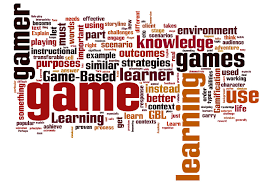How We Learn: Gamification and Game-Based Learning in Action
Learning isn’t what it used to be. It used to mean sitting still, taking notes, and waiting for the bell to ring. These days, learning is changing—and one of the biggest reasons is the growing use of gamification and game-based learning. Both have made their way into classrooms, workplaces, and health programs. But beyond the buzzwords, there’s something much deeper happening: people are finally figuring out how to make learning work better for more people

Getting Clear on the Basics
So let’s get the definitions out of the way—without making them sound like a textbook.
Gamification is when you take things that make games fun—like points, levels, or rewards—and add them to stuff that normally isn’t fun. Say you’re learning to type, and you get a gold star for every 10 words you get right. That’s gamification.
Game-based learning means using an actual game as the lesson itself. So instead of adding points to a worksheet, the game is the worksheet. You learn through the game, not just because of it.
Why It Sticks
It’s not just about fun. These strategies actually work because they tap into how people think and behave.
- People like progress. Earning a badge, beating a level, moving up a leaderboard—those little wins matter more than we think.
- Failure doesn’t feel final. Games make it okay to try again. That mindset helps people stay with a lesson longer.
- It’s active. Sitting and listening? Hard to do for long. Doing something—even virtually—keeps the brain alert.
- Feedback comes quick. You don’t have to wait for a grade. A wrong answer shows up right away, giving you a chance to correct it.
All of this makes learning more personal and more durable.
Where It’s Showing Up
In Schools
From elementary grades to college courses, teachers are turning to games and gamified platforms to keep students interested. Apps like Kahoot and Quizizz bring energy to review sessions. Minecraft Education Edition helps with lessons in history, math, and even language skills. And online learning platforms now have streak counters, level-ups, and instant feedback baked in.
In Workplaces
Employee training is another area where gamification is booming. Long, boring sessions are replaced with goal-based challenges. Want someone to learn customer service skills? Build a virtual situation where they handle a tough call. Need a leadership training refresher? Make it a decision-based simulation where the outcome changes depending on their choices.
In Health and Therapy
Gamified apps remind patients to take medicine, reward healthy habits, or guide users through recovery exercises. Some games help people with focus or memory. Kids with learning difficulties use games to practice skills they’d struggle with in a traditional setting.
How It’s Evolving
It’s not just that more people are using gamification—it’s that it’s getting smarter.
Personalized Learning Paths
Some platforms now adjust based on how the user is doing. Struggling with a topic? The system adds hints or slows the pace. Moving fast? It levels up the difficulty. This makes the experience feel custom-built.
Immersive Learning Environments
Virtual reality and augmented reality are changing what’s possible. Instead of watching a video, you step inside the lesson. Imagine a medical student walking through a 3D model of the human heart. Or a language student practicing conversation with an AI avatar in a digital café.
Collaborative Play
More games are now made for teamwork. These help players build communication, leadership, and social skills while solving a shared challenge. That’s a skillset traditional classrooms don’t always reach.
What Could Go Wrong?
It’s not all easy wins. These approaches have their flaws.
- Too much focus on rewards. If learners are only motivated by badges, the learning might not last once the rewards go away.
- Stress or anxiety. Not everyone likes competing. Some people freeze under pressure from timers or scoreboards.
- Tech problems. Devices break, systems glitch, and not every place has the budget to keep things running smoothly.
- Data concerns. These platforms often track user behavior, and it’s not always clear how that data is used or stored.
The Road Ahead
As technology improves, gamification and game-based learning will only become more normal. Expect to see:
- More integration with AI, allowing smarter adjustments in real time.
- Wider use of AR and VR, making learning feel more like being there.
- A growing focus on soft skills, like empathy and collaboration, taught through game scenarios.
But the big shift isn’t really about tech. It’s about trust. We’re starting to trust that people can learn better when they’re engaged, when they feel like their effort matters, and when failure is treated as part of the process—not the end of it.
Final Thought
Gamification and game-based learning aren’t magic bullets. They won’t fix every problem in education or training. But they offer something we’ve needed for a long time—a reason to care.
In the right hands, games help people feel smart, seen, and curious again. And that’s where real learning starts—not with a grade, but with a spark.



